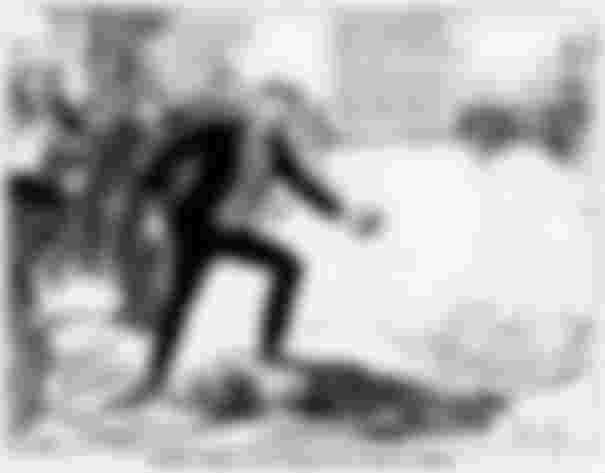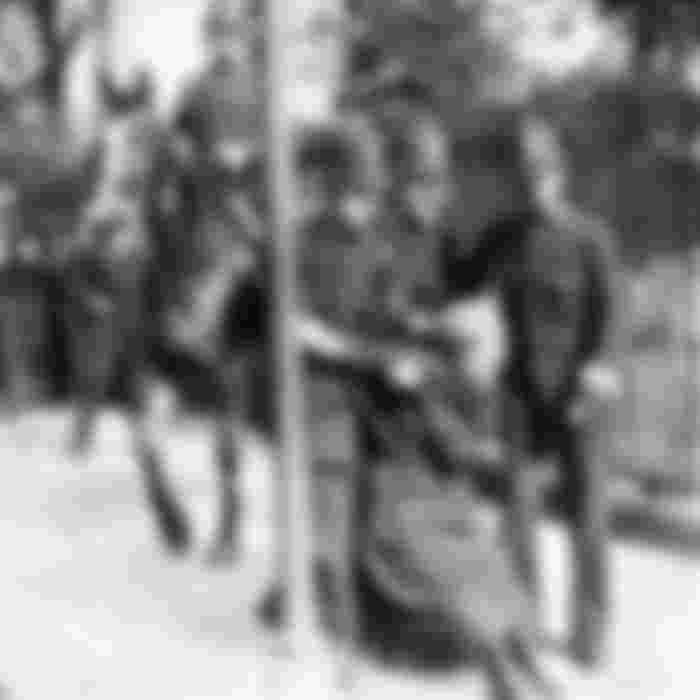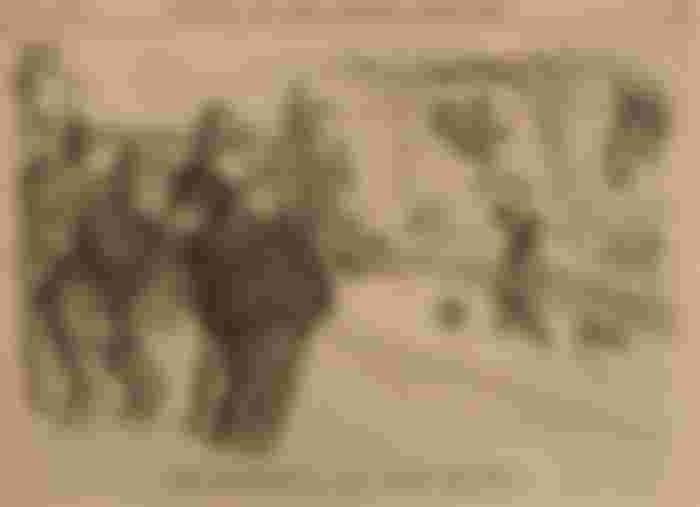Happy International Women's Day! Sorry for the tardiness of this article.

There's something very unfortunate about the narrative of women's rights. First of all, when I was in school the suffrage movement wasn't covered at all. We neither learned of Mrs. Pankhurst and the struggle for the vote in England or about the horrors faced by American suffragettes. We didn't know that activists were divided into two different camps, the suffragists priding themselves on being law-abiding and the suffragettes being a radical, militant group that would today be condemned as a terrorist organization.
Whereas we learned all about the Civil Rights Movement that ended segregation for black Americans, what a glorious thing it was, how the police reacted with violence towards the activists, and all of the heroes and heroines who participated, we didn't hear any of that about the suffragettes or suffragists.
All I knew was what the movies told me, and it usually wasn't very flattering. Like all kids, I had the Mary Poppins songs memorized, and while “Sister Suffragette” is catchy, it uses Mrs. Banks to paint the women as a bit flighty – a group who does silly things and then gets themselves arrested for it.
Most portrayals were even worse, from showing women's rights activists as being stick-in-the-muds who walk around breaking windows just for the heck of it to being man-haters to being creatures who want to break away from the feminine roles that society has forced them into but failing at being capable of making it in a man's world.
These were not the equivalents of giants like Martin Luther King, Jr., Malcolm X, or Rosa Parks, they were given to us as just silly little caricatures. Their story has long been overlooked, only given any serious treatment by films like Suffragette, which managed to draw ire from men participating in whataboutism.
In honor of the day, I think it's high time we shine a spotlight on these brave women and the almost fantastical tales that surround them.
The Reality of Police Brutality

When we think of police brutality, we often think of racial oppression. After all, the police were instrumental in recapturing runaway slaves, and the video of the violence perpetrated against activists at Selma was key to giving victory to the Civil Rights Movement. We know about the fire hoses, the dogs, the false arrests, and all manner of horrors enforced by the police.
Let's face it: the police are rarely on the right side of history. It's no different with the women's suffrage movement. While there are many, many instances of women dying by the hands of attackers as they marched and protested, here are a few stories among dozen in which the police took an active role in brutalizing them, even as they peacefully protested and didn't partake in the more radical attacks they would later be known for.

Black Friday 1910, London. On November 18, 1910, approximately 300 women marched peacefully on Parliament. The Conciliation Bill had been shot down, and the women wanted the Houses of Parliament to know that they'd lost support. Little did anyone know, police were everywhere, along with many male bystanders. Around 200 women were brutalized, often in a sexual nature. They were groped, their breasts violently twisted and pinched. They were beaten mercilessly by the police despite having not committed any crime. 4 men and 115 women were arrested, although charges were later dropped as the government and police scrambled to cover up evidence of the violent, 6 hours long attack that would contribute to the deaths of two suffragettes.
The newspapers never once mentioned the police brutality, just as the mainstream media often seeks to cover it up today. Had video cameras been more prevalent back then, perhaps this egregious attack would have been better preserved and taught in schools.
Alas, the only shocking bit of footage we have is of Emily Davison's death. Rushing onto the race track, she collided with the king's horse, Anmer, who was being ridden by the jockey Herbert Jones. It is widely believed nowadays that she was attempting to pin the suffrage colors to the horse so that he would finish the race sporting their flag. Whether she intended to become a martyr or simply to shock the viewers of the Epsom derby is still hotly debated.
Colliding with the horse, the animal falls to the ground. He was ultimately uninjured and continued racing after the incident. Mr. Jones suffered a concussion, but he too would continue to race. Davison wasn't so lucky. Taking the full brunt of the blow, she was immediately comatose. She died four days later, never having regained consciousness.
One reason this article is a bit late is that I struggled throughout the evening regarding whether or not to include the video. It's an old, old video. There's no sound, naturally, and, much like the assassination of President Kennedy, it plays on TV quite regularly. Still, bear in mind that you're watching a woman die for her cause. I place it here in honor of this courageous woman.
The Night of Terror, November 14, 1917. This is a tale of American suffragettes who were beaten in a Virginia prison. The horrific story would galvanize public support for the right of women to vote, although for the survivors of this brutal beat down the physical and psychological damage would last all their lives.
American suffragette Alice Paul felt that the American movement should be as radical as the British one. She'd seen the British suffragettes in action and felt that the American movement would do best to follow in their footsteps. She formed the National Women's Party in 1916 and in 1917 they went to picket the White House. It was the first time anyone had done so and was viewed with the same kind of resentment afforded the Capitol protesters of the 2020 election.
Calling themselves the Silent Sentinels, they waved banners that were meant to be provocative, one of them reading, “We, the women of America, tell you that America is not a democracy. Twenty million American women are denied the right to vote. President Wilson is the chief opponent of their national enfranchisement.”
The United States entered into World War I in 1917, and banners such as these, painting President Wilson in such a light while his actions were celebrated abroad, left the suffragettes being accused of anti-patriotism. While they'd been beaten by onlookers before, now they were being arrested.
On November 14, 40 guards were ordered to “teach the women a lesson,” and that lesson would have the opposite of its intended effect. This 'lesson' included beaten, torturing, choking, dragging, and more. Some notable instances were as follows:
Dora Lewis had her arm twisted behind her back. Police slammed her into an iron bed twice, leaving her unconscious. Her cellmate, fearing that Lewis was dead, suffered a heart attack and was denied medical treatment until the next morning.
Dorothy Day, who would later co-found the Catholic Worker Movement, was repeatedly slammed over an iron bench.
A woman named Lucy Burns was singled out as the group's ringleader. The guards handcuffed her arms to the cell bars above her head, leaving her hanging and bleeding all the night. Burns ultimately wound up serving more jail time than any other American suffragette.

Aside from these acts of brutality, police also regularly engaged in force-feeding those who went on hunger strikes in prisons. This practice involved forcefully holding down the woman with five or six men (sometimes women also), shoving a tube through her nose, and mixtures of milk, eggs, and other liquids were poured in.
This practice was extremely painful, with Mrs. Pankhurst writing that she would never be able to forget the screams of the women being force-fed around her. It also caused severe nosebleeds and even death via brain hemorrhage.
The Martial Arts Masters of the Suffrage Movement

This is the part that seems stranger than fiction, but it's absolutely true. There were suffragettes who were learning Japanese jiu-jitsu in order to defend themselves against brutality by the police and other attacking bystanders.
Edith Garrud was a small woman, just under five feet tall. She and her husband William ran a martial arts school long before men like Bruce Lee made martial arts cool in the West. Her husband would do the talking, Edith would do the demonstrating, and after the events of Black Friday, the learning of jiu-jitsu was encouraged by Pankhurst. As Emmeline Pankhurst's daughter, Sylvia, once said, “The police know jiu-jitsu. I advise you to learn jiu-jitsu. Women should practice it as well as men.”

To protect Emmeline Pankhurst, Garrud specially trained some suffragettes to form a group called The Bodyguards. The press called them Amazons. Their job was to protect Mrs. Pankhurst and to take on more dangerous missions. They created body-doubles and carried bouquets that concealed barbed wire that they could use to attack if need be.
On a Lighter Note
Drunk History did a bit on the suffragettes and their martial arts. I would like to end this otherwise solemn article with it. The suffragettes were an interesting group. In America, the movement had its roots in the abolitionist movement and sported figured like Harriet Tubman. In Britain, it crossed class lines and united the wealthy, poor, and middle class in a common cause. May it not be forgotten or brushed aside as a silly affair promoted by flighty women.






While reading this article my hair in body are rising and I felt sorry for those women who died and experienced violence from men. Although there are few cases of violence against women happening on this current timeline, im still thankful that women rights have given importance and there are law passed to protect women from violence.